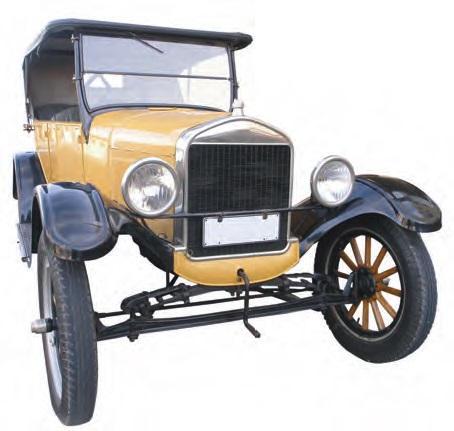The model of reliability
Evan Zabawski | TLT From the Editor January 2020
Built better or designed to fail?

By the strictest definition, reactive maintenance, also known as run to failure, is not really maintenance at all; it is simply a repair or replacement. It is meant for small, non-critical, inconsequential assets that are unlikely to fail and are often redundant. Assets matching this criterion that are run without any maintenance, like a lightbulb, fit the bill or rather the curve.
Asset failures conform to a model called a Weibull distribution, a plot of probability of failure over time/cycles that can resemble a bell curve. Incandescent light bulbs rarely fail upon installation or within the first few hours, nor do they last thousands of hours, the bulk fail between the expected lifespan of 1,000 hours and 2,000 hours, giving the distribution a very well-defined peak.
Interestingly, in the 1920s the average light bulb lifespan ranged from 1,500 hours to more than 2,500 hours, but a meeting of representatives from the major bulb manufacturers on Dec. 23, 1924, in Geneva introduced an industrial strategy now known as planned obsolescence. Forming a cartel to increase profits for all, bulb factories had to submit bulbs to a central testing facility in Switzerland to ensure compliance to a regulated 1,000-hour life, facing fines for longer or shorter lifespans that could upset the market balance. The cartel’s influence lasted only into the 1930s, but the codified lifespan remains unchanged today.
Just how long could an incandescent light bulb last if the cartel had not exerted its influence? The firemen at Fire Station No. 6 in Livermore, Calif., would tell you more than a million hours. They have a lightbulb manufactured around 1898 that was installed in 1901 and is still burning to this day (four interruptions amounting to about 200 hours total have interrupted its otherwise continuous operation).
The Palace Theatre in Fort Worth, Texas, has a light bulb that has been burning since 1908, but this is only the second example from billions and billions of installed incandescent light bulbs. Examples like these suggest “they don’t make them like they used to.” The inference being that goods are no longer made to the same standard or quality and therefore (even purposely) do not last as long, but is this true?
The most reflexive example to suggest this is true is the automobile. While it is quick to point out that some vehicles older than 20 years are still in driving condition, there are two key factors to suggest cars are not exemplifying the axiom. Principally, a car represents availability bias—a tendency to estimate probability based on the ease with which an example comes to mind.
Using Ford’s Model T as an example, we know that approximately 15 million of these cars were built between 1908 and 1927, yet records show that only 200,000 were registered in the U.S. in 1949. This hints at how few vehicles last more than 20-40 years; not a quantity statistically significant enough to suggest the ubiquitous car was built better in days gone by.
The other factor is that most of these cars were not run to failure; a majority likely failed due to outside factors like accidental damage. Also, many of the survivors underwent extensive preservative maintenance or even restoration, evidenced by an estimate from the curator of transportation at The Henry Ford Museum who said that there were “still probably 10,000 to 15,000 on the road” in 2018.
Conversely, most of these are not driven daily and do not serve as a fair comparator to modern vehicles. The median age for a daily-driven vehicle in the U.S. is currently 11.8 years old. It’s an all-time high, having increased 20% in the last 15 years, but the number more than 20 years old remains a low percentage.
Does a lack of change in life expectancy indicate cars are built with the same planned obsolescence as light bulbs? In a way, yes. However, their well-defined life expectancy is not evidence of planned failure or obsolescence for profit but rather a designed upgrade cycle for evolving emission and safety standards. Cars today are built better than ever; the focus is on the life expectancy of the passenger, not the vehicle.
Evan Zabawski, CLS, is the senior technical advisor for TestOil in Calgary, Alberta, Canada. You can reach him at ezabawski@testoil.com.